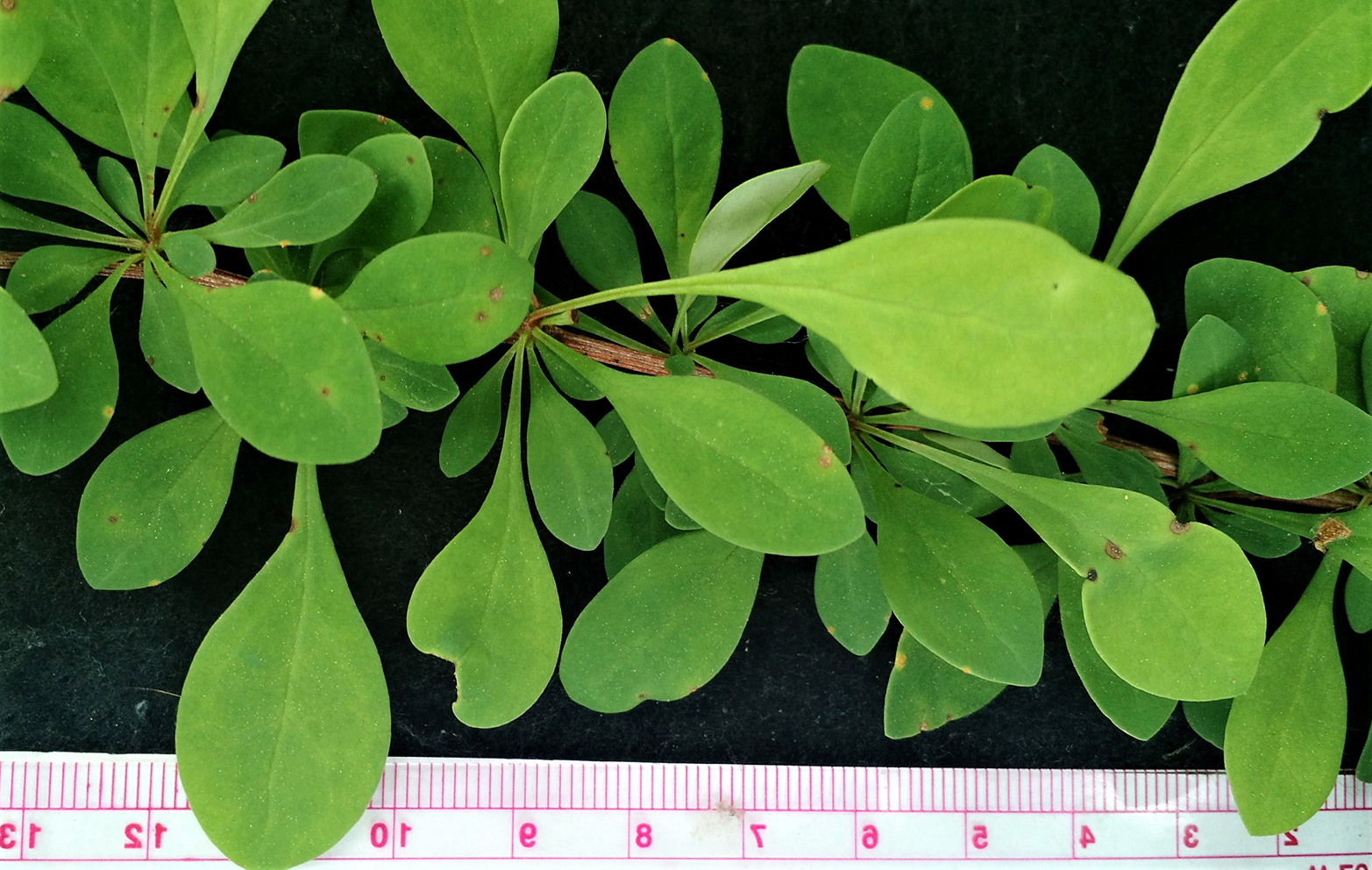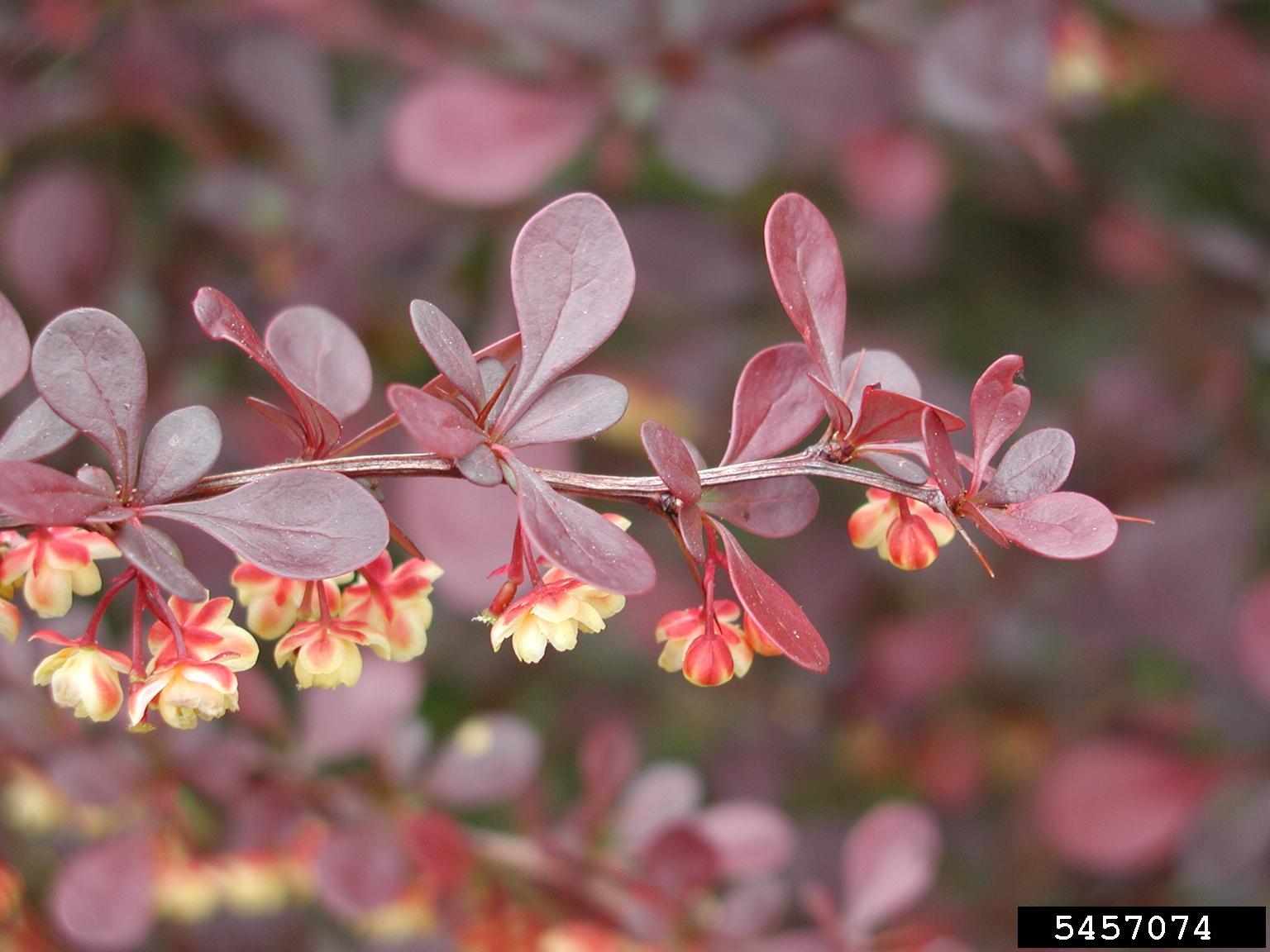Japanese Barberry: The Beautiful Shrub That's
Japanese Barberry: The Beautiful Shrub That's Also an Invasive Species
Japanese barberry is a popular ornamental shrub that is known for its bright yellow flowers, colorful fall foliage, and sharp thorns. However, this plant is also an invasive species in many parts of the United States.
In this blog post, we will take a closer look at Japanese barberry, including its appearance, growth habits, and invasive qualities. We will also discuss how to identify Japanese barberry, how to control it, and why it is important to do so.
Appearance and Growth Habits
Japanese barberry is a deciduous shrub that can grow up to 6 feet tall and wide. It has arching branches that are covered with sharp thorns. The leaves are oval-shaped and can be green, yellow, or red, depending on the variety. The flowers are small and yellow, and they bloom in the spring. The fruits are red berries that are eaten by birds.
Japanese barberry is a fast-growing plant that can spread by seed, root suckers, and layering. It is tolerant of a wide range of soils and conditions, and it can even grow in full shade. This makes it a popular landscaping plant, but it also contributes to its invasive nature.
Invasive Qualities
Japanese barberry is an invasive species in many parts of the United States. It forms dense thickets that can crowd out native vegetation. It also shades out the ground, preventing the growth of seedlings. This can lead to a loss of biodiversity and a decrease in wildlife habitat.
Japanese barberry can also damage infrastructure. Its roots can crack sidewalks and driveways. Its thorns can puncture tires and injure people and animals.
How to Identify Japanese Barberry
If you are concerned that you may have Japanese barberry on your property, there are a few things you can look for. The plant has the following characteristics:
- Sharp thorns
- Oval-shaped leaves that can be green, yellow, or red
- Small yellow flowers that bloom in the spring
- Red berries that are eaten by birds
If you see a plant with these characteristics, it is important to identify it correctly. You can do this by consulting a plant identification guide or by contacting your local extension office.
How to Control Japanese Barberry
There are a number of ways to control Japanese barberry. The best method for you will depend on the size of the infestation and the location of the plants.
- Hand removal: If the infestation is small, you can remove Japanese barberry by hand. Be sure to wear gloves to protect yourself from the thorns.
- Cutting: You can also control Japanese barberry by cutting it back to the ground. This will kill the plant, but it may resprout from the roots.
- Herbicides: There are a number of herbicides that can be used to control Japanese barberry. Be sure to choose a herbicide that is labeled for use on this plant.
- Mulching: Mulching around Japanese barberry plants can help to prevent them from spreading by seed.
Why It Is Important to Control Japanese Barberry
Japanese barberry is an invasive species that can cause a number of problems. It is important to control this plant to protect native vegetation, wildlife habitat, and infrastructure.
If you have Japanese barberry on your property, there are a number of ways to control it. The best method for you will depend on the size of the infestation and the location of the plants.
By controlling Japanese barberry, you can help to protect your property and the environment.
Japanese barberry (Berberis thunbergii) is a popular ornamental shrub that is known for its bright red berries and fall foliage. However, it is also an invasive species in many parts of the United States. If you are considering planting Japanese barberry in your landscape, it is important to weigh the pros and cons carefully.
On the one hand, Japanese barberry is a relatively easy-care plant that can tolerate a wide range of conditions. It is also deer-resistant and can provide a colorful accent to your yard. However, Japanese barberry can quickly form dense thickets that can outcompete native plants. It can also harbor ticks, which can transmit Lyme disease.
If you are concerned about the potential negative impacts of Japanese barberry, I encourage you to visit Garden Wiki. This website provides comprehensive information about Japanese barberry, including its invasive potential, its impact on native plants, and its role in tick transmission.
FAQ of japanese barberry
- What is Japanese barberry?
Japanese barberry (Berberis thunbergii) is a deciduous shrub native to East Asia. It is a popular ornamental plant in North America, but it has become an invasive species in many areas. Japanese barberry forms dense thickets that can shade out native vegetation and reduce biodiversity. The plant's thorns can also make it difficult to control.
- What are the negative impacts of Japanese barberry?
Japanese barberry has a number of negative impacts on the environment. It can:
- Crowd out native plants, reducing biodiversity.
- Create fire hazards.
- Spread diseases to native plants.
- Harbor pests, such as deer ticks.
- Make it difficult to access areas of land.
- How can I control Japanese barberry?
There are a number of ways to control Japanese barberry, including:
- Hand pulling: This is the most effective method for small infestations.
- Mowing: This can help to weaken the plant, but it is not a permanent solution.
- Herbicides: There are a number of herbicides that can be used to kill Japanese barberry. It is important to choose a herbicide that is labeled for use on woody plants and that will not harm native plants.
- Biological control: There are a number of insects and diseases that can be used to control Japanese barberry. This method is often more effective than herbicides, but it can take several years to see results.
- Is it illegal to plant Japanese barberry?
In some areas, it is illegal to plant Japanese barberry. It is important to check with your local authorities to see if there are any restrictions on planting this plant.
- How can I prevent Japanese barberry from spreading?
If you have Japanese barberry on your property, there are a number of things you can do to prevent it from spreading:
- Do not allow the plant to set seed.
- Remove any suckers or seedlings that appear.
- Mow the plant regularly.
- Use a barrier to prevent the plant from spreading to other areas.
Image of japanese barberry
- A close-up of the leaves of a Japanese barberry plant. The leaves are dark green and have sharp spines along the edges.

- A full-size Japanese barberry plant. The plant has a dense, bushy growth habit and can reach up to 6 feet tall.

- A Japanese barberry plant in bloom. The flowers are small and yellow, and they bloom in clusters.

- A Japanese barberry plant with ripe fruit. The fruit is red and round, and it is edible.

- A Japanese barberry plant in the fall. The leaves turn a brilliant red color in the fall.

Post a Comment for "Japanese Barberry: The Beautiful Shrub That's"